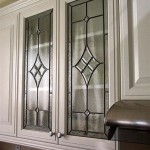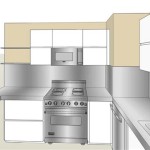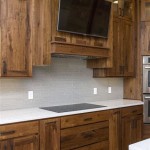Installing kitchen cabinets yourself can be a daunting task, but it doesn’t have to be. With the right tools and a few tips from experienced home architects, you can easily do it yourself. In this article, we’ll cover the basics of kitchen cabinet installation, including the types of cabinets and the tools you’ll need to get the job done.
When it comes to installing kitchen cabinets yourself, the first step is selecting the right cabinets for your space. Consider the size and shape of your kitchen, as well as how many cabinets you’ll need to accommodate your storage and cooking needs. If you’re working with a limited budget, consider buying ready-to-assemble (RTA) cabinets, which are typically more affordable than pre-assembled cabinets.
Once you’ve chosen the cabinets for your space, it’s time to prepare for installation. Before you begin, it’s important to measure your kitchen walls and the cabinets to ensure a proper fit. It’s best to measure twice before cutting, as mistakes can be costly. You’ll also want to make sure you have the right tools for the job. The most common tools used for kitchen cabinet installation are a drill, screwdriver, level, hammer, tape measure, and screws.
Once you’ve gathered the necessary tools and supplies, it’s time to begin the installation process. Start by placing the first cabinet in the corner of the room, making sure it is level and secure. Then, use the screws to attach the cabinet to the wall. Make sure to use a level to ensure the cabinet is completely level. Once the first cabinet is in place, use a tape measure to measure the distance from the cabinet to the wall, and use this measurement to mark the wall for the next cabinet.
Continue this process for the remaining cabinets, taking extra care to make sure each cabinet is level and secure. If you’re installing cabinets that are connected, use a drill to make pilot holes for the screws and use a screwdriver to attach the cabinets together. Once all the cabinets are in place, it’s time to add the hardware. This includes door pulls, hinges, and handles. Make sure to follow the instructions provided with the hardware and use a level to make sure the hardware is installed correctly.
Installing kitchen cabinets yourself can seem like a daunting task, but it doesn’t have to be. With the right tools, supplies, and a few tips from experienced home architects, you can easily do it yourself. Just remember to measure twice, use a level, and take extra care to secure the cabinets in place. With a little patience, you’ll be able to create a beautiful kitchen without having to hire a professional.









Related Posts








